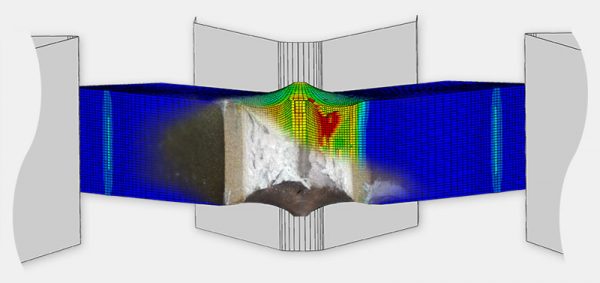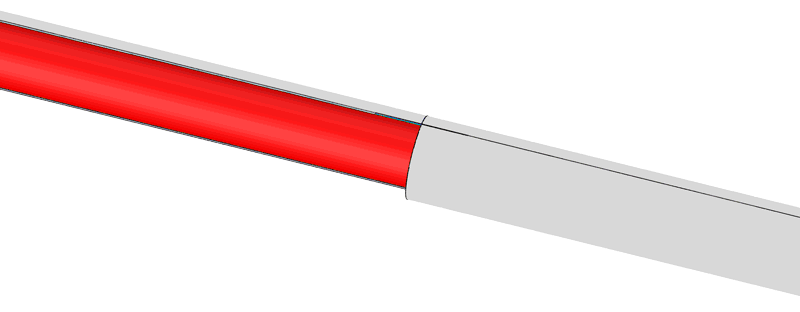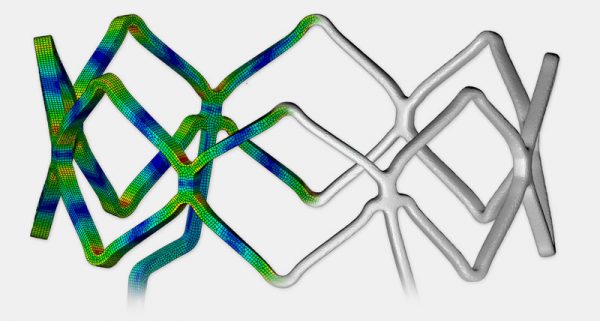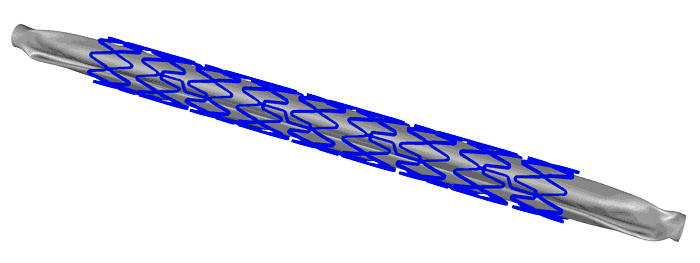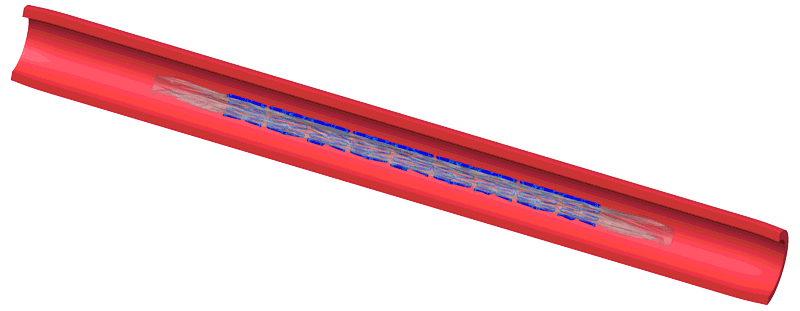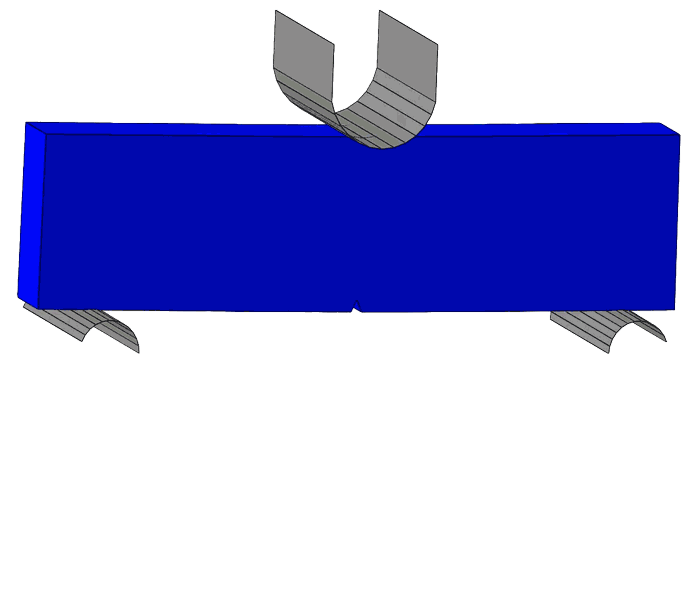Wiesent, L.; Schultheiß, U.; Lulla, P.; Nonn, A.; Noster, U. Mechanical properties of small structures built by selective laser melting 316 L stainless steel – a phenomenological approach to improve component design Werkstoffsimulation Artikel In: Materialwissenschaft und Werkstofftechnik, Bd. 51, Nr. 12, S. 1615–1629, 2020. @article{Wiesent2020,
title = {Mechanical properties of small structures built by selective laser melting 316 L stainless steel – a phenomenological approach to improve component design},
author = {L. Wiesent and U. Schultheiß and P. Lulla and A. Nonn and U. Noster},
doi = {10.1002/mawe.202000038},
year = {2020},
date = {2020-12-17},
journal = {Materialwissenschaft und Werkstofftechnik},
volume = {51},
number = {12},
pages = {1615--1629},
abstract = {Experimental investigations are conducted to quantify the influence of specimen thickness and orientation on the mechanical properties of selective laser melted stainless steel 316 L. The results indicate that the mechanical strength and ductility increase with increasing specimen thickness until a saturation value is reached from a specimen thickness of about 2 mm. Specimen orientation dependency is pronounced for thin specimens (< 1.5 mm), whereas only small deviations in strength are observed for thicker specimens with orientations of 30°, 45° and 90° to build direction. The mechanical properties of the specimen orientation of 0° to build direction shows great deviation to the other orientations and the smallest overall strength. A reliable design of selective laser melted components should account for specimen thickness and orientation, e. g. by a correction factor. Furthermore, it is recommended to avoid loads vertical (90°) and parallel (0°) to build direction to guarantee higher ductility and strength.},
keywords = {},
pubstate = {published},
tppubtype = {article}
}
Experimental investigations are conducted to quantify the influence of specimen thickness and orientation on the mechanical properties of selective laser melted stainless steel 316 L. The results indicate that the mechanical strength and ductility increase with increasing specimen thickness until a saturation value is reached from a specimen thickness of about 2 mm. Specimen orientation dependency is pronounced for thin specimens (< 1.5 mm), whereas only small deviations in strength are observed for thicker specimens with orientations of 30°, 45° and 90° to build direction. The mechanical properties of the specimen orientation of 0° to build direction shows great deviation to the other orientations and the smallest overall strength. A reliable design of selective laser melted components should account for specimen thickness and orientation, e. g. by a correction factor. Furthermore, it is recommended to avoid loads vertical (90°) and parallel (0°) to build direction to guarantee higher ductility and strength. |
Keim, V.; Paredes, M.; Nonn, A.; Münstermann, S. FSI-simulation of ductile fracture propagation and arrest in pipelines: Comparison with existing data of full-scale burst tests Werkstoffsimulation Artikel In: International Journal of Pressure Vessels and Piping, Bd. 182, S. 104067, 2020, ISSN: 0308-0161. @article{Keim2020b,
title = {FSI-simulation of ductile fracture propagation and arrest in pipelines: Comparison with existing data of full-scale burst tests},
author = {V. Keim and M. Paredes and A. Nonn and S. Münstermann},
doi = {10.1016/j.ijpvp.2020.104067},
issn = {0308-0161},
year = {2020},
date = {2020-01-01},
journal = {International Journal of Pressure Vessels and Piping},
volume = {182},
pages = {104067},
abstract = {The fracture propagation and arrest control for pipelines transporting rich natural gases and high vapor pressure liquids is based on the Battelle Two-Curve Model (BTCM). Distinct limitations of this model were demonstrated for past and modern steels and gas mixtures. These can be related to the insufficient description of individual physical processes and interactions between the pipe material and transported mixture during the running ductile fracture. In the past, fluid-structure interaction (FSI) models enabled a more sophisticated, coupled analysis of the failure scenario. To quantify their capability of describing the multi-physical processes, the FSI models need to be verified by experimental data from full-scale burst tests (FSBT). Therefore, this paper deals with the simulation of five FSBTs from the literature on API grade X65 pipes with different pipe geometries, mixtures and initial conditions. The FSI is modeled by the coupled Euler-Lagrange (CEL) method. The modified Mohr-Coulomb (MMC) model is implemented in the CEL framework to describe the deformation and ductile fracture in the X65/L450 pipes. 3D Euler equations are used to calculate the mixture decompression with the GERG-2008 equation of state defining the volumetric behavior of a CO2-rich mixture, CH4 and H2. The extended model considers the effect of soil backfill on the pipe deformation and inertia. The numerical predictions agree well with the experimental findings in terms of the crack propagation speed and arrest length underlining the capability of the developed numerical tool.},
keywords = {},
pubstate = {published},
tppubtype = {article}
}
The fracture propagation and arrest control for pipelines transporting rich natural gases and high vapor pressure liquids is based on the Battelle Two-Curve Model (BTCM). Distinct limitations of this model were demonstrated for past and modern steels and gas mixtures. These can be related to the insufficient description of individual physical processes and interactions between the pipe material and transported mixture during the running ductile fracture. In the past, fluid-structure interaction (FSI) models enabled a more sophisticated, coupled analysis of the failure scenario. To quantify their capability of describing the multi-physical processes, the FSI models need to be verified by experimental data from full-scale burst tests (FSBT). Therefore, this paper deals with the simulation of five FSBTs from the literature on API grade X65 pipes with different pipe geometries, mixtures and initial conditions. The FSI is modeled by the coupled Euler-Lagrange (CEL) method. The modified Mohr-Coulomb (MMC) model is implemented in the CEL framework to describe the deformation and ductile fracture in the X65/L450 pipes. 3D Euler equations are used to calculate the mixture decompression with the GERG-2008 equation of state defining the volumetric behavior of a CO2-rich mixture, CH4 and H2. The extended model considers the effect of soil backfill on the pipe deformation and inertia. The numerical predictions agree well with the experimental findings in terms of the crack propagation speed and arrest length underlining the capability of the developed numerical tool. |
Keim, V.; Nonn, A.; Münstermann, S. Application of the modified Bai-Wierzbicki model for the prediction of ductile fracture in pipelines Werkstoffsimulation Artikel In: International Journal of Pressure Vessels and Piping, Bd. 171, S. 104 - 116, 2019, ISSN: 0308-0161. @article{Keim2019d,
title = {Application of the modified Bai-Wierzbicki model for the prediction of ductile fracture in pipelines},
author = {V. Keim and A. Nonn and S. Münstermann},
doi = {10.1016/j.ijpvp.2019.02.010},
issn = {0308-0161},
year = {2019},
date = {2019-01-01},
journal = {International Journal of Pressure Vessels and Piping},
volume = {171},
pages = {104 - 116},
abstract = {The complex mechanical and corrosive loads of modern pipeline systems transporting oil, natural gas and CO2 impose steadily increasing requirements on material properties. The majority of current design standards still limit the application of modern high toughness linepipe steels due to the simple specification of material requirements in terms of energy levels from Charpy impact or Battelle Drop-Weight-Tear (BDWT) tests. In consequence, research activities have been conducted recently aiming at developing modified or novel experimental methods for the characterization of the ductile fracture behavior. To quantify the effects of various parameters on fracture behavior and derive suitable correlations, it is necessary to accompany these activities by numerical simulations with appropriate ductile damage models. In this paper, the MBW model is applied to study the structural behavior of pipelines in ductile fracture regime. Due to its precise incorporation of the underlying load conditions, the damage model is successfully used to simulate the slant fracture behavior in Battelle Drop weight tear test specimens and pipe sections. In comparison to ductile damage models applied in former studies, namely the Gurson-Tvergaard-Needleman and Cohesive Zone model, the presented numerical methodology allows for a more detailed investigation of loading, material and geometry effects on fracture and crack arrest behavior of pipelines.},
keywords = {},
pubstate = {published},
tppubtype = {article}
}
The complex mechanical and corrosive loads of modern pipeline systems transporting oil, natural gas and CO2 impose steadily increasing requirements on material properties. The majority of current design standards still limit the application of modern high toughness linepipe steels due to the simple specification of material requirements in terms of energy levels from Charpy impact or Battelle Drop-Weight-Tear (BDWT) tests. In consequence, research activities have been conducted recently aiming at developing modified or novel experimental methods for the characterization of the ductile fracture behavior. To quantify the effects of various parameters on fracture behavior and derive suitable correlations, it is necessary to accompany these activities by numerical simulations with appropriate ductile damage models. In this paper, the MBW model is applied to study the structural behavior of pipelines in ductile fracture regime. Due to its precise incorporation of the underlying load conditions, the damage model is successfully used to simulate the slant fracture behavior in Battelle Drop weight tear test specimens and pipe sections. In comparison to ductile damage models applied in former studies, namely the Gurson-Tvergaard-Needleman and Cohesive Zone model, the presented numerical methodology allows for a more detailed investigation of loading, material and geometry effects on fracture and crack arrest behavior of pipelines. |
Keim, V.; Marx, P.; Nonn, A.; Münstermann, S. Fluid-structure-interaction modeling of dynamic fracture propagation in pipelines transporting natural gases and CO2-mixtures Werkstoffsimulation Artikel In: International Journal of Pressure Vessels and Piping, Bd. 175, S. 103934, 2019, ISSN: 0308-0161. @article{KEIM2019103934,
title = {Fluid-structure-interaction modeling of dynamic fracture propagation in pipelines transporting natural gases and CO2-mixtures},
author = {V. Keim and P. Marx and A. Nonn and S. Münstermann},
doi = {10.1016/j.ijpvp.2019.103934},
issn = {0308-0161},
year = {2019},
date = {2019-01-01},
journal = {International Journal of Pressure Vessels and Piping},
volume = {175},
pages = {103934},
abstract = {As part of current design standards, the Battelle Two-Curve Model (BTCM) is still widely used to predict and secure ductile crack arrest in gas transmission pipelines. For modern linepipe steels and rich natural gases or CO2 mixtures, the BTCM might lead to incorrect predictions. On the one hand, it suffers from the insufficient description of the individual physical processes in the pipe material and fluid itself. Furthermore, the model does not account for fluid-structure-interaction (FSI) effects during simultaneous running-ductile fracture (RDF) and mixture decompression. Numerical FSI models allow for a more sophisticated, coupled analysis of the driving forces for the failure of pipelines. This paper deals with the development of an FSI model for the coupled prediction of 3D pressure profiles acting on the inner pipe wall during crack propagation. The coupled Euler-Lagrange (CEL) method is used to link the fluid and structure models. In a Lagrange formulation, the modified Bai-Wierzbicki (MBW) model describes the plastic deformation and ductile fracture as a function of the underlying stress/strain conditions. The fluid behavior is calculated in a 3D model space by Euler equations and the GERG-2008 reference equation of state (EOS). The coupled CEL model is used to predict the RDF in small-diameter pipe sections for different fluid mixtures. The calculated 3D pressure distributions ahead and behind the running crack tip (CT) significantly differ in axial and circumferential directions depending on the mixture composition. The predicted FSI between the pipe wall and fluid decompression in 3D CEL/FSI model provides reliable knowledge about the pressure loading of the pipeline during RDF.},
keywords = {},
pubstate = {published},
tppubtype = {article}
}
As part of current design standards, the Battelle Two-Curve Model (BTCM) is still widely used to predict and secure ductile crack arrest in gas transmission pipelines. For modern linepipe steels and rich natural gases or CO2 mixtures, the BTCM might lead to incorrect predictions. On the one hand, it suffers from the insufficient description of the individual physical processes in the pipe material and fluid itself. Furthermore, the model does not account for fluid-structure-interaction (FSI) effects during simultaneous running-ductile fracture (RDF) and mixture decompression. Numerical FSI models allow for a more sophisticated, coupled analysis of the driving forces for the failure of pipelines. This paper deals with the development of an FSI model for the coupled prediction of 3D pressure profiles acting on the inner pipe wall during crack propagation. The coupled Euler-Lagrange (CEL) method is used to link the fluid and structure models. In a Lagrange formulation, the modified Bai-Wierzbicki (MBW) model describes the plastic deformation and ductile fracture as a function of the underlying stress/strain conditions. The fluid behavior is calculated in a 3D model space by Euler equations and the GERG-2008 reference equation of state (EOS). The coupled CEL model is used to predict the RDF in small-diameter pipe sections for different fluid mixtures. The calculated 3D pressure distributions ahead and behind the running crack tip (CT) significantly differ in axial and circumferential directions depending on the mixture composition. The predicted FSI between the pipe wall and fluid decompression in 3D CEL/FSI model provides reliable knowledge about the pressure loading of the pipeline during RDF. |
Kramer, S. L. B.; Jones, A.; Mostafa, A.; Ravaji, B.; Tancogne-Dejean, T.; Roth, C. C.; Gorji, M.; Pack, K.; Foster, J. T.; Behzadinasab, M.; Sobotka, J. C.; McFarland, J. M.; Stein, J.; Spear, A. D.; Newell, P.; Czabaj, M. W.; Williams, B.; Simha, H.; Gesing, M.; Gilkey, L. N.; Jones, C. A.; Dingreville, R.; Sanborn, S. E.; Bignell, J. L.; Cerrone, A. R.; Keim, V.; Nonn, A.; Cooreman, S.; Thibaux, P.; Ames, N.; Connor, D. O.; Parno, M.; Davis, B.; Tucker, J.; Coudrillier, B.; Karlson, K. N.; Ostien, J. T.; Foulk, J. W.; Hammetter, C. I.; Grange, S.; Emery, J. M.; Brown, J. A.; Bishop, J. E.; Johnson, K. L.; Ford, K. R.; Brinckmann, S.; Neilsen, M. K.; Jackiewicz, J.; Ravi-Chandar, K.; Ivanoff, T.; Salzbrenner, B. C.; Boyce, B. L. The third Sandia fracture challenge: predictions of ductile fracture in additively manufactured metal Werkstoffsimulation Artikel In: International Journal of Fracture, Bd. 218, Nr. 1, S. 5-61, 2019, ISSN: 1573-2673. @article{Kramer2019,
title = {The third Sandia fracture challenge: predictions of ductile fracture in additively manufactured metal},
author = {S. L. B. Kramer and A. Jones and A. Mostafa and B. Ravaji and T. Tancogne-Dejean and C. C. Roth and M. Gorji and K. Pack and J. T. Foster and M. Behzadinasab and J. C. Sobotka and J. M. McFarland and J. Stein and A. D. Spear and P. Newell and M. W. Czabaj and B. Williams and H. Simha and M. Gesing and L. N. Gilkey and C. A. Jones and R. Dingreville and S. E. Sanborn and J. L. Bignell and A. R. Cerrone and V. Keim and A. Nonn and S. Cooreman and P. Thibaux and N. Ames and D. O. Connor and M. Parno and B. Davis and J. Tucker and B. Coudrillier and K. N. Karlson and J. T. Ostien and J. W. Foulk and C. I. Hammetter and S. Grange and J. M. Emery and J. A. Brown and J. E. Bishop and K. L. Johnson and K. R. Ford and S. Brinckmann and M. K. Neilsen and J. Jackiewicz and K. Ravi-Chandar and T. Ivanoff and B. C. Salzbrenner and B. L. Boyce},
doi = {10.1007/s10704-019-00361-1},
issn = {1573-2673},
year = {2019},
date = {2019-01-01},
journal = {International Journal of Fracture},
volume = {218},
number = {1},
pages = {5-61},
abstract = {The Sandia Fracture Challenges provide a forum for the mechanics community to assess its ability to predict ductile fracture through a blind, round-robin format where mechanicians are challenged to predict the deformation and failure of an arbitrary geometry given experimental calibration data. The Third Challenge (SFC3) required participants to predict fracture in an additively manufactured (AM) 316L stainless steel bar containing through holes and internal cavities that could not have been conventionally machined. The volunteer participants were provided extensive data including tension and notched tensions tests of 316L specimens built on the same build-plate as the Challenge geometry, micro-CT scans of the Challenge specimens and geometric measurements of the feature based on the scans, electron backscatter diffraction (EBSD) information on grain texture, and post-test fractography of the calibration specimens. Surprisingly, the global behavior of the SFC3 geometry specimens had modest variability despite being made of AM metal, with all of the SFC3 geometry specimens failing under the same failure mode. This is attributed to the large stress concentrations from the holes overwhelming the stochastic local influence of the AM voids and surface roughness. The teams were asked to predict a number of quantities of interest in the response based on global and local measures that were compared to experimental data, based partly on Digital Image Correlation (DIC) measurements of surface displacements and strains, including predictions of variability in the resulting fracture response, as the basis for assessment of the predictive capabilities of the modeling and simulation strategies. Twenty-one teams submitted predictions obtained from a variety of methods: the finite element method (FEM) or the mesh-free, peridynamic method; solvers with explicit time integration, implicit time integration, or quasi-statics; fracture methods including element deletion, peridynamics with bond damage, XFEM, damage (stiffness degradation), and adaptive remeshing. These predictions utilized many different material models: plasticity models including J2 plasticity or Hill yield with isotropic hardening, mixed Swift-Voce hardening, kinematic hardening, or custom hardening curves; fracture criteria including GTN model, Hosford-Coulomb, triaxiality-dependent strain, critical fracture energy, damage-based model, critical void volume fraction, and Johnson-Cook model; and damage evolution models including damage accumulation and evolution, crack band model, fracture energy, displacement value threshold, incremental stress triaxiality, Cocks-Ashby void growth, and void nucleation, growth, and coalescence. Teams used various combinations of calibration data from tensile specimens, the notched tensile specimens, and literature data. A detailed comparison of results based of these different methods is presented in this paper to suggest a set of best practices for modeling ductile fracture in situations like the SFC3 AM-material problem. All blind predictions identified the nominal crack path and initiation location correctly. The SFC3 participants generally fared better in their global predictions of deformation and failure than the participants in the previous Challenges, suggesting the relative maturity of the models used and adoption of best practices from previous Challenges. This paper provides detailed analyses of the results, including discussion of the utility of the provided data, challenges of the experimental-numerical comparison, defects in the AM material, and human factors.},
keywords = {},
pubstate = {published},
tppubtype = {article}
}
The Sandia Fracture Challenges provide a forum for the mechanics community to assess its ability to predict ductile fracture through a blind, round-robin format where mechanicians are challenged to predict the deformation and failure of an arbitrary geometry given experimental calibration data. The Third Challenge (SFC3) required participants to predict fracture in an additively manufactured (AM) 316L stainless steel bar containing through holes and internal cavities that could not have been conventionally machined. The volunteer participants were provided extensive data including tension and notched tensions tests of 316L specimens built on the same build-plate as the Challenge geometry, micro-CT scans of the Challenge specimens and geometric measurements of the feature based on the scans, electron backscatter diffraction (EBSD) information on grain texture, and post-test fractography of the calibration specimens. Surprisingly, the global behavior of the SFC3 geometry specimens had modest variability despite being made of AM metal, with all of the SFC3 geometry specimens failing under the same failure mode. This is attributed to the large stress concentrations from the holes overwhelming the stochastic local influence of the AM voids and surface roughness. The teams were asked to predict a number of quantities of interest in the response based on global and local measures that were compared to experimental data, based partly on Digital Image Correlation (DIC) measurements of surface displacements and strains, including predictions of variability in the resulting fracture response, as the basis for assessment of the predictive capabilities of the modeling and simulation strategies. Twenty-one teams submitted predictions obtained from a variety of methods: the finite element method (FEM) or the mesh-free, peridynamic method; solvers with explicit time integration, implicit time integration, or quasi-statics; fracture methods including element deletion, peridynamics with bond damage, XFEM, damage (stiffness degradation), and adaptive remeshing. These predictions utilized many different material models: plasticity models including J2 plasticity or Hill yield with isotropic hardening, mixed Swift-Voce hardening, kinematic hardening, or custom hardening curves; fracture criteria including GTN model, Hosford-Coulomb, triaxiality-dependent strain, critical fracture energy, damage-based model, critical void volume fraction, and Johnson-Cook model; and damage evolution models including damage accumulation and evolution, crack band model, fracture energy, displacement value threshold, incremental stress triaxiality, Cocks-Ashby void growth, and void nucleation, growth, and coalescence. Teams used various combinations of calibration data from tensile specimens, the notched tensile specimens, and literature data. A detailed comparison of results based of these different methods is presented in this paper to suggest a set of best practices for modeling ductile fracture in situations like the SFC3 AM-material problem. All blind predictions identified the nominal crack path and initiation location correctly. The SFC3 participants generally fared better in their global predictions of deformation and failure than the participants in the previous Challenges, suggesting the relative maturity of the models used and adoption of best practices from previous Challenges. This paper provides detailed analyses of the results, including discussion of the utility of the provided data, challenges of the experimental-numerical comparison, defects in the AM material, and human factors. |


